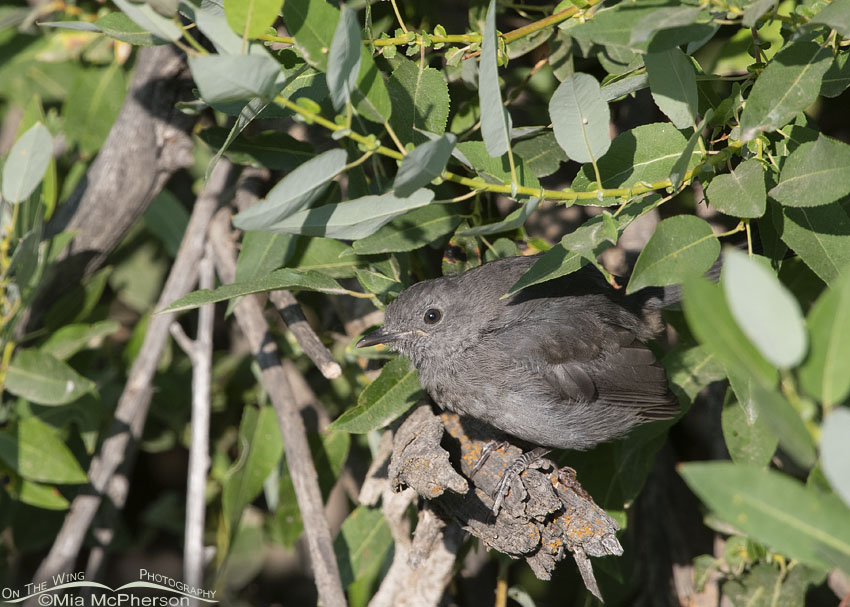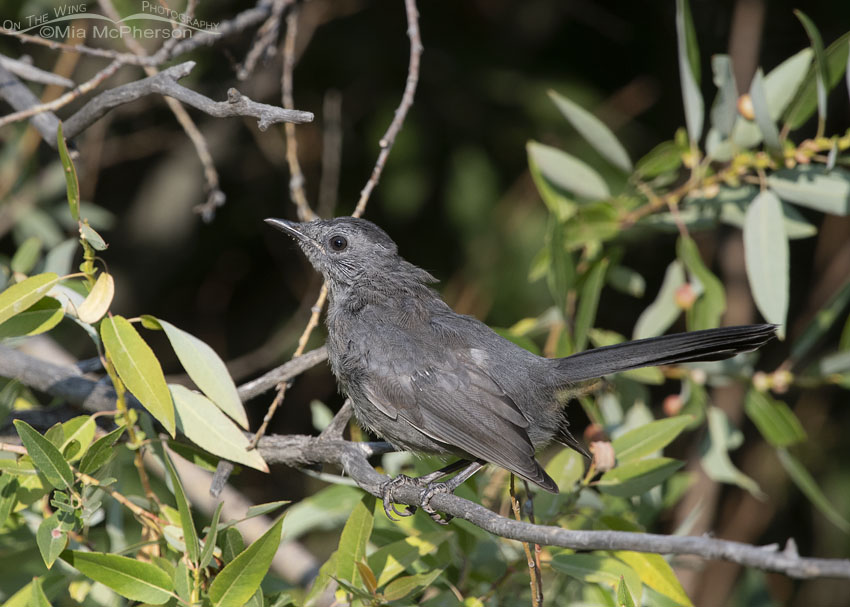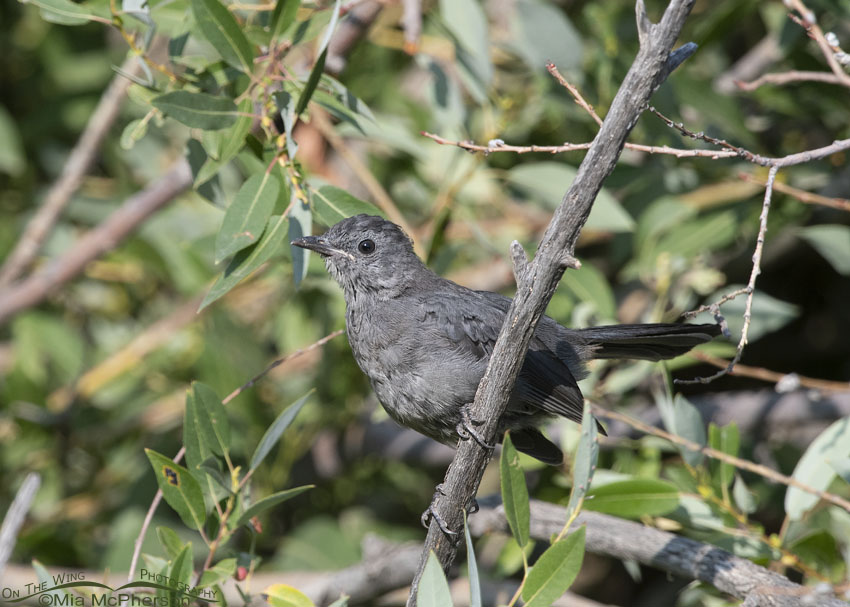It was a lot of fun photographing adult Gray Catbirds earlier this year and photographing the juveniles learning to be on their own has been equally fun and entertaining.
 Juvenile Gray Catbird peeking out of a thicket – Nikon D500, f7.1, 1/800, ISO 640, Nikkor 500mm VR with 1.4x TC, natural light
Juvenile Gray Catbird peeking out of a thicket – Nikon D500, f7.1, 1/800, ISO 640, Nikkor 500mm VR with 1.4x TC, natural light
I have been seeing lots of juvenile Gray Catbirds lately and I am quite happy about that because it means they had a successful breeding season at least in the canyon where I have been photographing them since early spring. The juvenile Gray Catbirds I have been watching haven’t had adults feeding them and I haven’t seen them begging to be fed so I believe they are learning to be on their own and hunting for food by themselves.
 Messy juvenile Gray Catbird – Nikon D500, f7.1, 1/1250, ISO 640, -0.7 EV, Nikkor 500mm VR with 1.4x TC, natural light
Messy juvenile Gray Catbird – Nikon D500, f7.1, 1/1250, ISO 640, -0.7 EV, Nikkor 500mm VR with 1.4x TC, natural light
Some of the juvenile catbirds look a bit messy because they are molting into their “First Basic” or “Basic I” plumage, they still don’t have the chestnut under-tail coverts that the adult have. Messy or not they are still handsome birds in my opinion.
 Alert Gray Catbird juvenile – Nikon D500, f7.1, 1/1250, ISO 640, -0.3 EV, Nikkor 500mm VR with 1.4x TC, natural light
Alert Gray Catbird juvenile – Nikon D500, f7.1, 1/1250, ISO 640, -0.3 EV, Nikkor 500mm VR with 1.4x TC, natural light
The pale gapes of these juvenile Gray Catbirds are still visible, they won’t be pale when these juveniles reach adulthood.
It has been great to watch these young Gray Catbirds learn how to be on their own and I have enjoyed my time with them, it won’t be long before they migrate and I hope to spend more time with them before they go.
Life is good.
Mia
Gape: In bird anatomy, the gape is the interior of the open mouth of a bird, and the gape flange is the region where the two mandibles join together at the base of the beak.
Click here to see more of my Gray Catbird photos plus facts and information about this species.


I do love to see your birds. So different from ours, and equally lovely.
At first quick glance, I thought the first image was that of a bunny…I had a TINY, tough mini bunny I named “Bunita”… A pet shop gave her(and some feed) to me, because they were sick of her kicking her food and bedding out of the cage. They had given her cedar chips bedding and she didn’t like it…smell was too strong…we gave her pine chips and hay and had no problem …had her for years..she loved apple tree twigs…
.Was going crazy trying to identify bird singing such a beautiful, varied song…as good as any mockingbird…finally saw it…a catbird!!!
Beautiful photos .Mia
Hi! So cute a sweet little bird! You make all your photo’s so great and Telling so much about where and how they live! Have a great day sweetie!